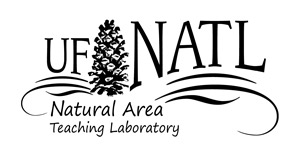
Biota
The Biota section of the NATL website lists organisms that occur in the Natural Area and summarizes what is known about some of them. For each taxonomic or ecological grouping, species are listed by scientific and vernacular names. In some cases these names are hyperlinked to summary accounts that give relevant information about the species and access to other materials, such as accounts at other websites.
Plant Community Monitoring
Plant community monitoring is extremely important because it can guide our decision-making concerning the impact our management actions have on certain communities. A prime area of concern is the upland pine community, where active restoration with considerable resources is being spent. Overtime, monitoring data may help inform visitors and provide real data for any potential research projects as well.
In 2018 members of the NATL operations committee, along with volunteers, helped establish a set of long-term monitoring plots. The plots established are 10m2 and feature five nested quadrats of sizes (0.01m2, 0.1m2, 1m2, 3.16m2, 10m2) that extend outwards beginning from the NE plot corner. A total of 10 plots were established at NATL's upland pine area. Plots were established with donated scrap metal poles, marked with GPS, and are photographed annually from the south plot border facing north. In each plot species presence were recorded only once as they occurred in each nested quadrat. Coverage for each species was measured at the 10m2 level. The overstory is included but denoted with and the * symbol in the data. Data is transferred from Google Sheets link to NATL website annually.
Click here to download:
NATL Plant Community Monitoring Data
Community Map
Monitoring Protocol.
Grid Map.
GPS Grid Points.
NATL Grid Project.
Vascular Plants by Scientific Name
This is the central source for data, images, and information about NATL's more than 560 species of vascular plants. Species are listed alphabetically by scientific name.
Vascular Plants by Common Name
If you don't know the scientific name of a plant of interest, you can search for it by its common name. However, be forewarned that many species have multiple common names and the ones that are less frequently used may not be in our indexes. Each common name in our indexes is linked to the scientific name most frequently associated with it.


